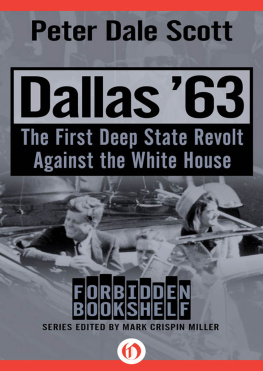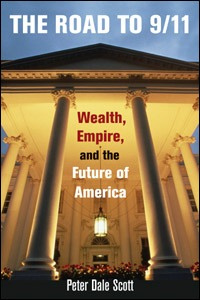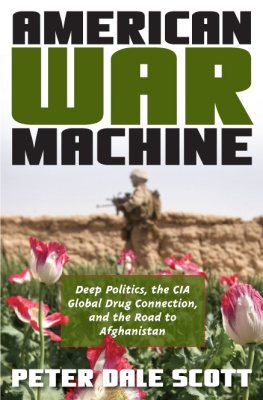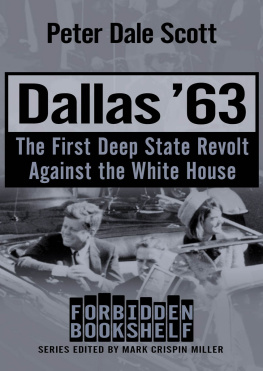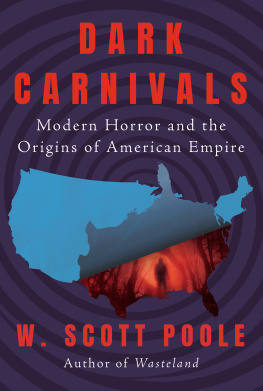Dallas 63
The First Deep State Revolt Against the White House
Peter Dale Scott
with editorial assistance from Bill Simpich, Oliver Curme, and Rex Bradford

Contents
1. Introduction: The JFK Assassination as a Structural Deep Event
One can add that a persuasive politics is one of openness, whereas a violent politics is usually shrouded in exclusion and secrecy.
The distinction is both extremely important and hard to define precisely; a number of other opposing terms can be used, that are roughly but not exactly coterminous. Arendt herself also writes of top down and bottom up power, others of egalitarian or democratic versus oppressive power. It is clear that top-down power is not always violent, just as democratic power is not always nonviolent. However the terms persuasive, bottom-up, and democratic, even if not synonymous or exactly coterminous, help us to focus on a Socratic ideal of influence by persuasion that has, though the centuries, been a lodestar of western civilization. By contrast their oppositesviolence, top-down, repressiveepitomize what I believe civilization should be moving away from.
These dyadic alternatives represent not just alternative ideologies and life-styles, but also divisions in most large-scale societies and bureaucracies. Here we find agencies, like the U.S. State Department, whose stated aim is diplomatic persuasion, and other agencies, like the Pentagon, whose business, ultimately, is violence. In America always, but particularly in the Kennedy era, we have seen occasional confrontations between the two tendencies on both the bureaucratic and also the popular levels: witness the wrangles over the meaning and application of the Second Amendment.
In this book I would also like to paraphrase Arendts contrast between power and violence by using two common terms with a common Greek origin: true power unites consolidates a society through dialogue; violence divides a society through the dialectics inherent in violence. For whereas power tends to resolve and reduce social tensions through persuasion, violence tends to perpetuate them by creating resentment and opposition.
As authors from Aeschylus to Jacques Ellul have written, violence creates violence.create social divisions that are very difficult to resolve or dissipate. America is an outstanding exemplar of both forces: the product of a revolution proclaiming equality, it is still living with the violent consequences of slavery.
In foreign policy Since World War Two, American foreign policy has witnessed the interplay of two opposing strategies towards the Soviet Union: coexistence through persuasive diplomacy at the United Nations, versus military dominance disguised by the code phrase Peace Through Strength. The title of a policy book by statesman-financier Bernard Baruch in 1952, Peace Through Strength was a slogan used by Ronald Reagan (and by Republican platforms since) to describe an overt strategy of global domination and American hegemony. It was used to proclaim the official end of an earlier U.S. foreign policy, dating from the end of Eisenhower administration to the beginning of Jimmy Carters a policy of dtente.
But the Pax Americana in the post-Reagan era of U.S. hegemony has not been peaceful at all, quite the reverse. As former U.S. Army officer Andrew Bacevich has commented, belief in the efficacy of military power almost inevitably breeds the temptation to put that power to work. Peace through strength easily enough becomes peace through war. In my last chapter I compare the last years of the Pax Americana today to the last years of the Pax Britannica in the late 19th Century, when hubristic over-reaching led dialectically to a series of minor conflicts, followed by a World War.
The tension between the two American policies, dtente versus hegemony, has been acute since the fall of the Berlin Wall. Jack Matlock, former U.S. ambassador to Moscow and an adviser on Russian affairs to Reagan and G.H.W. Bush, has said more than once that when Gorbachev, after negotiations the West, agreed in 1990 to pull back Soviet troops in Eastern Europe, the West in return gave a clear commitment not to expand.
Yet the American response was in fact quite different. As Matlock wrote recently in the Washington Post,
President Bill Clinton supported the expansion of NATO to include former Warsaw Pact countries. Those moves seemed to violate the understanding that the United States would not take advantage of the Soviet retreat from Eastern Europe. [To Putin] President George W. Bush delivered the diplomatic equivalent of swift kicks to the groin: further expansion of NATO in the Baltics and the Balkans, and plans for American bases there.
On one level it is possible to view American foreign policy of the last half century as one of a shifting ebb and flow between the two policies, dtente versus hegemony. But on another level there has been an unchecked and significant structural change between the agencies advocating them. Since World War Two there has been a visible loss of power by those U.S. agencies advocating dtente (most notably the State Department) to the agencies advocating expansion and hegemony (the Department of Defense, and its post-war ally in intervention, the CIA).
The massive projection of U.S. wealth and power abroad has produced a massive increase of covert unchecked power in Washington, to the extent that we now have what the journalists Dana Priest and William Arkin have called
two governments: the one its citizens were familiar with, operated more or less in the open: the other a parallel top secret government whose parts had mushroomed in less than a decade into a gigantic, sprawling universe of its own, visible to only a carefully vetted cadreand its entirety visible only to God.
The latter has become so powerful that some of us have come to call it the deep state.
Mike Lofgren has described the visible public state as the tip of the iceberg, and the covert deep state as the subsurface part of the iceberg.
Because of this interaction, I find myself sometimes using deep state in an inclusive sense, to refer to all those forces outside the public state with the power to influence its policies, and more often using deep state in a restrictive sense, meaning those active covert agencies in and around Washington, that sometimes take guidance in their policies, not from the White House, but from the deep state as a whole. This ambiguity in language may sometimes be confusing, but reflects the ambiguity and diffuseness of deep power itself.
For example, we must also take into account the private consulting firms, like Booz Allen Hamilton, to which 70 percent of Americas huge intelligence budget is now outsourced. These corporations, and oil companies in particular, desire U.S. hegemony as a guarantee to their overseas investments, and as an inducement to governments in remote places like Kazakhstan to be open to influence from America, not just from their immediate neighbors Russia and Iran.
The power of the public state is based on the constitution and periodic elections, and is thus limited by checks and balances. The power of the covert deep state, in contrast, is unchecked; and has expanded as the global U.S. presence has expanded. The two kinds of power were destined to come into conflict. The public state aims at openness and persuasion. The deep state represents the opposite, intervention by secrecy and violence.
This is a book about the assassination of President John F. Kennedy, who after the brush with nuclear war in the Cuban Missile Crisis took initial steps to reduce the role of hegemonic violence in American foreign policy. But on another level this is also a book tracing, especially in its last chapter, how the forces of hegemonic violence in America came to be prevalent over the once predominant forces in America calling for containment, parity, and coexistence.

